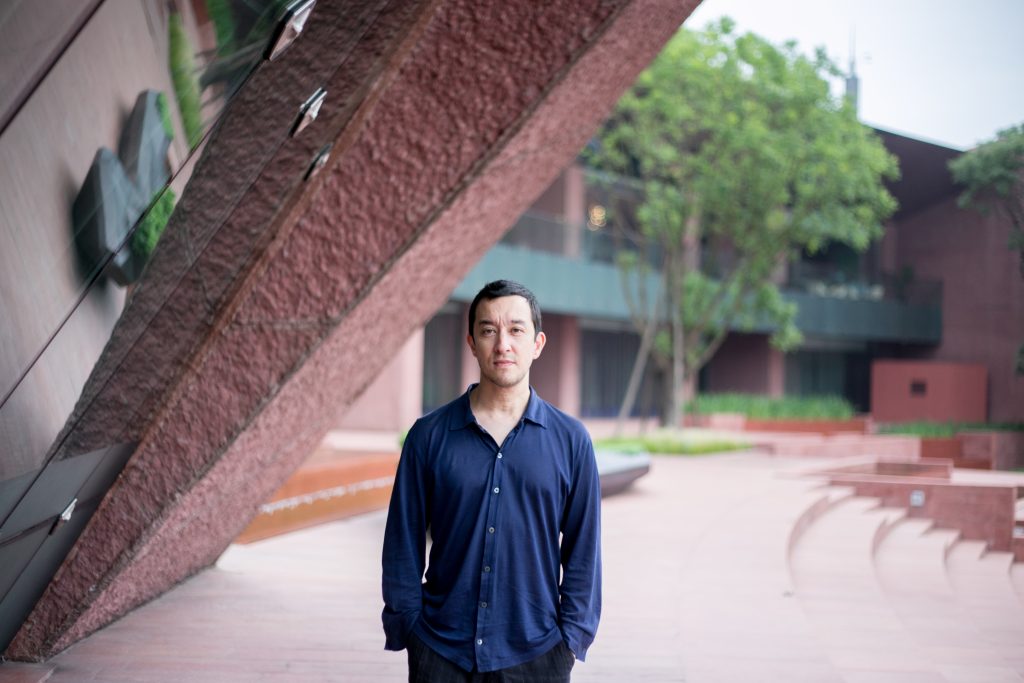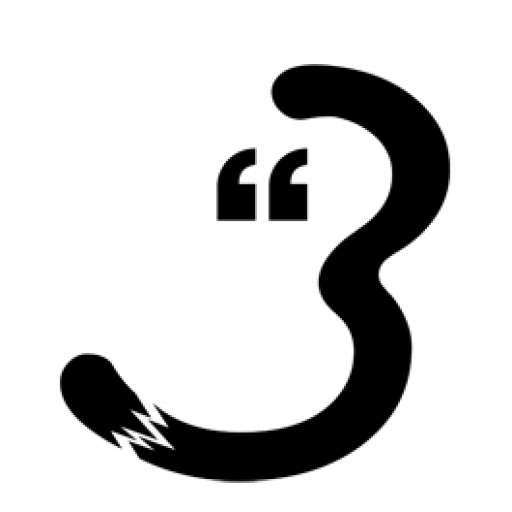
采访时间:2017年6月14日 Interview Date: June 14, 2017
秦思源(Colin Siyuan Chinnery),艺术家,中英混血。8岁学功夫,12岁返英读书,上世纪90年代担任北京“穴位乐队”主唱。先后做过大英图书馆管理员、中国国家图书馆国际敦煌学项目主任、英国大使馆文化教育处艺术项目总监、尤伦斯当代艺术中心副馆长、上海博览会国际当代艺术展总监。
Colin Siyuan Chinnery is an artist of mixed Chinese-British heritage. He learned Chinese Kung Fu at the age of eight and went back to the UK for school at the age of twelve. In the 1990s, Chinnery was the singer for the band “Xuewei” in Bejing. Later, he served as a researcher at the British Library, Head of the International Dunhuang Project of the National Library of China, Arts Manager for the British Council in Beijing, Deputy Director and Chief Curator of Ullens Center for Contemporary Art (UCCA) and Director of ShContemporary art fair in Shanghai.
※
秦思源好几次采访都提到,北京的鸽子不一样,它们背上拴着哨,飞翔的风中传来独一无二的北京声场。在他看来,每段历史,每个城市,都有其专属声场,那是生活在时下的人所演绎的声音历史。
In previous interviews, Chinnery has said several times that pigeons in Beijing are different to other places, for there is the tradition of attaching whistles to their backs which generate a unique sound while they are flying. From his perspective, every city boasts its own sound properties. It is a sound history created by the people who are living at each moment.
记录一座城市的声场史
Recording the History of a City through sound
秦思源出生于文化世家,其父是英国汉学家秦乃瑞(John Chinnery,1924-2010),其母陈小莹是陈源(笔名陈西滢)与凌叔华之女。外祖母与林徽因、冰心齐名为“民国三大才女”,外祖父曾是鲁迅文学上的主要论敌。
Chinnery’s family has a rich background in culture. His father John Chinnery (1924-2010) was a British sinologist, and his mother Hsiaoying Chinnery is the daughter of Chen Yuan (also known as Chen Xiying under the pen name) and Ling Shuhua. His grandmother Ling Shuhua, together with Lin Huiyin and Xie Wanying (Bing Xin), are acclaimed as the “Three Talented Women of the Republic of China,” and his grandfather Chen Yuan was a major literary opponent to Lu Xun, one of the greatest writers in contemporary Chinese history.
他的外祖父母曾居住的北京史家胡同,于2012年在英国查尔斯王储基金会资助下,改为博物馆。作为视角独特的艺术家及院落居住者的后代,秦思源成为博物馆的顾问,受2004年《都市发声》策展经历启发,秦思源建议体现老北京的声音文化。
His grandparents once lived in Beijing’s Shijia Hutong, which was transformed into a museum in 2012 with funding from The Prince’s Charities Foundation. As a descendant of the house’s old owner and an artist with a unique perspective, Chinnery was selected as the consultant of the museum. Inspired by his curating experience for Sound and the City, Chinnery put forward the idea of presenting the unique sound culture of old Beijing.
一隅不过五六平方米的小屋子,“装”了上百种声音。清晨卖烧饼的吆喝、磨刀人的板拍铁、缝纫机的“嗒嗒”、女孩儿跳绳时哼的歌、有轨电车的售票员的报站声……这些已经消失或正在消失的声音正是我们历史的一部分。秦思源说:“声音和气味是一种直觉的记忆。通过声音的记录,让客观的历史变成个人的历史。”
In a room less than five square meters, there are hundreds of different sounds: the yelling of Shaobing hawkers in the early morning, clangs of grinders, the clatter of sewing machines, songs of girls skipping rubber bands and station broadcasting of ticket sellers in trams. Those sounds that have disappeared or are disappearing are parts of Beijing’s history. Chinnery said: “Both sounds and smells are intuitive memories. And records in sounds can transform an objective history into our own personal histories.”
用耳朵观察世界
Discovering the World with Our Ears
三年前史家胡同博物馆里的这个声音项目拓展成一个声音博物馆的想法,可是因为资金有限,秦思源不得不暂停收集新声音。他说,很多朋友乐意帮忙,但这种方式持续性不够。直到今年,声音博物馆再启向前,秦思源的项目具象为两个方面,一是以主题和时间节点为线索,整理记录北京上个世纪30-90年代的声音历史,以录音师、IT人士、历史学家等专业合作为主,与北京的古玩收藏以及各行各业的声音见证者合作。此外,他还有一个名为“Embodied Sound”的国际当代艺术项目,对全世界的公众开放,希望普通人去记录当下身边的声音,用耳朵观察世界。
Constrained by a lack of funds, Chinnery had to stop collecting more sounds three years ago. He explained that many friends were willing to help, but this wasn’t a sustainable way to develop the project. However, his idea had developed into a conceptual sound museum, which he has started to develop in earnest this year. His new project can be considered as two parts. Part one is to collect and record sounds of Beijing in 1930s-1990s under different of themes and timelines. This part will be guided by a professional team consisting of sound engineers, IT engineers, and historians, and will be joined in by antique collectors of Beijing and sound recorders from all sectors. The other part is an international contemporary art project called “Embodied Sound”, a project open to all people across the world. Chinnery hopes that the public can join in the art project to record sounds around them and to discover the world with their ears.
“最早,手机是用来听的,现在都是看。拍照片、录视频发朋友圈分享,而后眼前这个被拍物我们就不在乎了,而是关心谁给我点了赞。”秦思源说:“这是社会的变革,也是我们在慢慢退化,丧失对世界的第一手接触。假如脱离日常惯性,用耳朵来接触世界,可能会遇到一些惊喜,发现意想不到的周围。”
“The phone was used for listening but now is for taking photos and videos. After sharing those photos and videos in WeChat, people forget them and then only care about those Likes,” said Chinnery, “this is the symptom of the times and is also a demonstration of losing our first-hand experience of the world. If we put aside those daily routines and use our ears to interact with the world, we may find something exciting and unexpected.”
声音构建的时间隧道
Time Tunnel of Sound
北京以前的出租车打表器会播放一段小旋律,声音一响起,就把秦思源拉回了21世纪初的背景中。“回忆得非常直观,整个身体都回去了。”他思索着,若是复制更多别的声音,别人也能有怀念有共鸣,也能进入过去的音域中。对声音的复制,其实是个时间隧道。
Years ago in Beijing, the taxi meter would play a jingle for the passengers. Every time the music starts, it would take Chinnery back to the beginning of the 21st century. “The memory is easily perceived and my whole body is taken back to the time of that sound.” He wondered that if more duplicated sounds could be made, will they arouse other people with the same resonance? Will those sounds bring people into the past time as well? Actually, Chinnery understands that the reproduction of sounds is the weaving of a time tunnel.
1857年,法国发明家里昂·史考特(Leon Scott)发明了Phonoautograph声波振记器,这机器也只能记下声波形状而已。可见,声音记录史不足两百年,声音作为珍贵的载体,对世界影响甚远。秦思源说:“我只能回溯到民国时期,必须有活人来考证。如果有人记得溥仪小时候在皇宫说话的样子,他得有100多岁了。”
Although Frenchman Leon Scott invented the Phonautograph in 1857, it only transcribes sound waves as undulations or other deviations in a line. It indicates that the history of the sound recording is not as long as 200 years. However, sounds as precious carriers have a far-reaching effect on the world. Chinnery said: “I am only able to find sounds dating back to the Republic of China. But these sounds still need the input and feedback of people still alive. If somebody could remember the voice of the child Puyi (the last Emperor of China) in the Forbidden City, he/she must be well over 100 years old by now.”
是否有声音是不需要存在的?比如说噪音。对于这个问题,秦思源快速回说“没有”,并强调:“声音不是独立存在的,总有一个发声物,你可以说汽车鸣笛可以不存在,可你能说汽车不需要存在吗?”之所以有Embodied Sound这样社会参与的项目,也可以让我们在不断改造我们的世界的时候,有一种意识——我们还可以有更多好声音。
Regarding the question whether there are such sounds that do not need recording, like noises. Chinnery answered without hesitation “No.” He stressed that “Sounds cannot exist without sound sources. We can say that a car horn does not need to exist, but can you say that the car does not need to exist?” That is why social engagement projects like Embodied Sound are launched. By taking part in those projects, people can have the consciousness that while the world is changing, there are still more good sounds need to be recorded.
※
All rights reserved, contact Lenore to know more.
